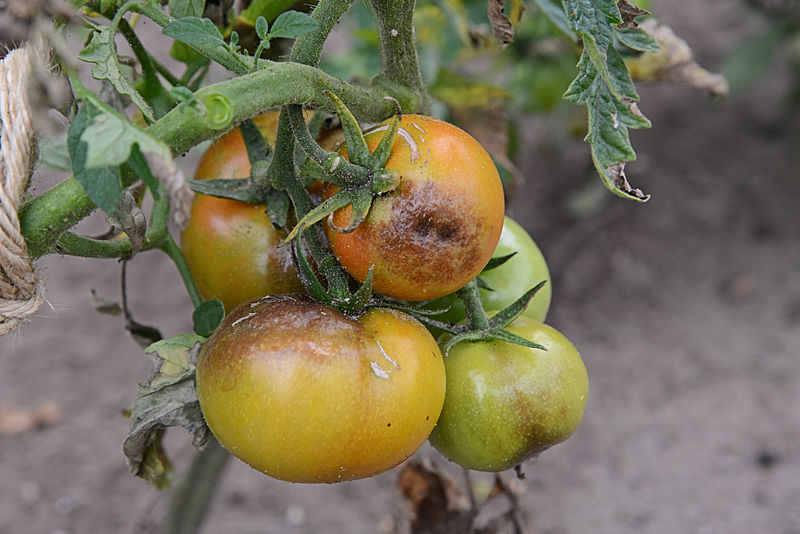
The fungus-like water mold, Phytophthora infestans, causes late blight in tomatoes and potatoes as well as in some other members of the nightshade family, Solonaceae. It appears first as dark green spots on the surface of leaves or stems, often near the tips or edges where moisture collects. The spots turn brown and then black and form a white fuzz on the underside of the leaves. Large greasy brown spots may develop on fruit. Late blight may resemble early blight but has no yellow halos on the leaves as early blight does. Rain can wash the spores to other parts of the plant and the wind can blow spores to other plants. A moist, cool (54–64 °F) environment, with water saturated conditions, facilitates the development and spread of the disease. Photo Credit Rasbak-Wikimedia-Commons
Control
- Remove infected plants immediately and dispose of them to reduce the spread of the fungus.
- Wash tools, hands, and clothing that may carry the disease.
- Use a 3 year crop rotation scheme with crops from other plant families
- Remove and dispose of above ground crop residual
- Use resistant varieties
- Water in the morning using drip irrigation to reduce the time that moisture is on the leaves
- Mulch plants to reduce the effects of rain splashing spores onto plants
- Increase air circulation by increasing space between plants or trimming excess foliage
- Spray with a solution of 1 tablespoon baking soda, 2 1/2 tablespoons vegetable oil, and 1 teaspoon of liquid soap (not detergent) per gal of water. Repeat every 2 weeks, more often if rain washes the solution away.
- Spray with a prepared solution of Bacillus subtilis about every 2 weeks or when rain has washed it off the leaves.
- For very severe infestations spray with copper or sulfur, heeding cautionary warnings on the containers. These are more demanding solutions to the problem and the copper application will require special equipment.